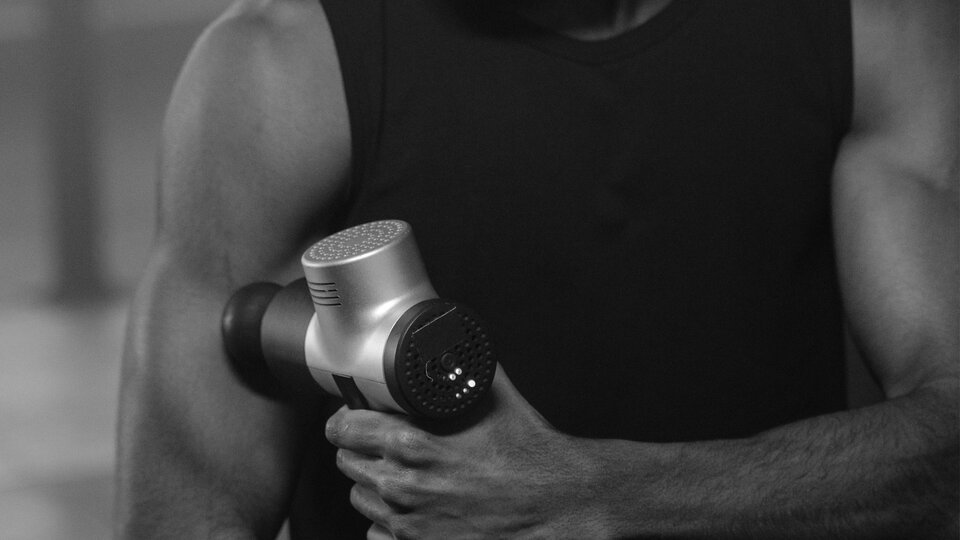In recent years, gaining access to sophisticated recovery modalities and technologies has become increasingly easier. From personal e-stim to cryotherapy and infrared sauna studios, the general population may indulge in the same treatments as professional athletes and celebrities.
There are dozens of options for passive recovery methods which, by definition, are not worn or used during activity nor do they require active participation from the individual using them. Below is an outline of research-based evidence on the utility and return on investment of several popular modalities to help you determine which are best for your needs.
This article summarizes the findings of Cullen, et al. (2021) in their narrative review of the literature on passive muscular recovery strategies.
Background
Delayed onset muscle soreness (DOMS) is the technical name for the muscle soreness, discomfort, or all-out weakness felt following the initiation of a new training program or stimulus.1 As you can imagine or have experienced firsthand, DOMS can affect performance, mood, and even put you at an elevated risk of injury if participating in activity. Though muscle soreness does not always escalate to the level of DOMS, the causes and mechanisms by which they occur are the same, only varying in severity and accumulation.
Recovery is a multifactorial art, and muscle tissue healing is only one part of the grander picture. The information below is focused only on modalities that produced positive results in reducing biomarkers of muscular damage in research to aid in muscle recovery.
Compression Garments
Compression as a recovery modality is likely a familiar concept to you, representing the “C” in the “R.I.C.E” protocol introduced in the 1970s. While the R.I.C.E. protocol has since been recanted by its originator and better practices validated, compression strategies have stood the test of time and research as viable ways to reduce muscle soreness and improve recovery.
Compression can help reduce swelling of the involved area and improve blood flow, ultimately aiding in the removal of metabolic waste that contributes to muscle soreness and fatigue. Several studies have shown that compression garments can be a great recovery aid following rigorous activity. These garments range from stockings to full compression suits, depending on the population they were implemented with. Though there are dozens of options available for purchase off-the-shelf, anthropometrics from person to person will impact the efficacy of these standard-fit products. If you are considering using compression garments, it is recommended you get fitted for them professionally.
Cryotherapy
Cryotherapy is another recently popular modality available to the general population, namely in the form of cryo-clubs and membership-based services. In research, cryotherapy is examined in a few different forms: cold water immersion, whole-body cryotherapy, and partial-body cryotherapy (think the commercially-available “chambers” for the last two).
The results on whole-body and partial-body cryotherapy seem to vary depending on population, modality, timing, and study design. However, cold water immersion repeatedly shows strong evidence of enhancing muscle recovery given the proper temperatures and timing.
Cold water immersion has repeatedly demonstrated benefits in improving DOMS, enhancing metabolism, and even affecting pain pathways. Specifically, immersion in water temperatures ranging from 51 to 59°F for a total time of 11 to 15 minutes. If you are considering using cold water immersion as a muscular recovery modality, be sure to monitor the water temperature and keep an eye on the time to operate within a safe range.
Percussive Therapy
Percussive therapy utilizes a device to combine the mechanisms of compression and vibration. It is thought to reduce pain, stiffness, and soreness, and improve blood flow, though there are very few studies done using it on athletes and active populations.
In the research available, percussive therapy devices have seemed to provide the same benefit as manual therapy but in a fraction of the time. This same study showed percussion was superior to foam rolling and vibration alone. However, more research would help us gain an understanding of the benefits of percussive therapy on blood flow, metabolic waste buildup, and swelling.
Conclusion
Relying on science-based approaches to muscle recovery can help you optimize your performance and return on investment. Based on the research shared above:
-
Get professionally fitted or at least do proper sizing research on compression garments, and make sure to read the directions for optimal wear time
-
Use cold water immersion as your cryotherapy of choice, in water 51 to 59°F for no longer than 15 minutes
-
Investing in a percussive therapy device is a great way to reduce muscle stiffness, in moderation
These modalities, alongside other efforts like proper nutrition, sleep, and psychological stress management, can help you bounce back more quickly and be on to the next challenge. So eat, sleep, and recover hard!
Citation
-
Cheung, Karoline, et al. “Delayed Onset Muscle Soreness.” Sports Medicine, vol. 33, no. 2, 2003, pp. 145–164., https://doi.org/10.2165/00007256-200333020-00005.
-
Cullen, Michael-Flynn L., et al. “Passive Recovery Strategies after Exercise: A Narrative Literature Review of the Current Evidence.” Current Sports Medicine Reports, vol. 20, no. 7, 2021, pp. 351–358., https://doi.org/10.1249/jsr.0000000000000859.
